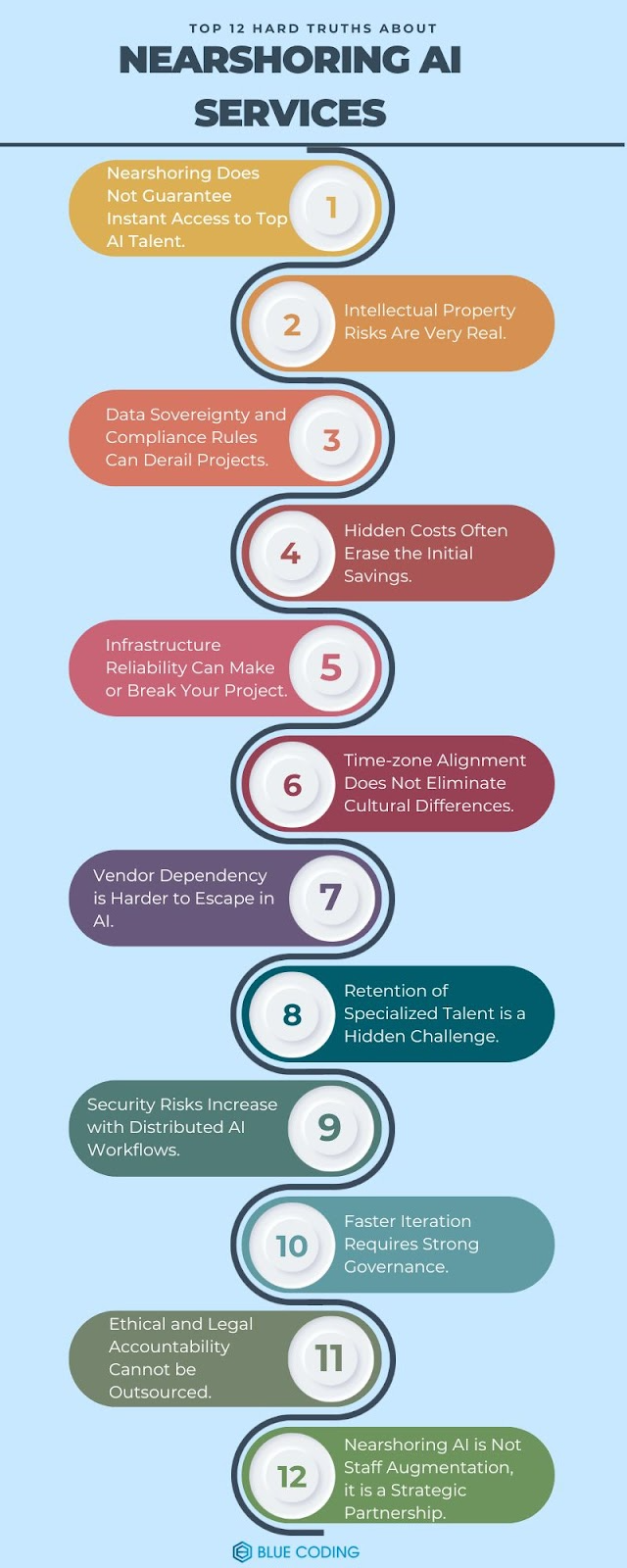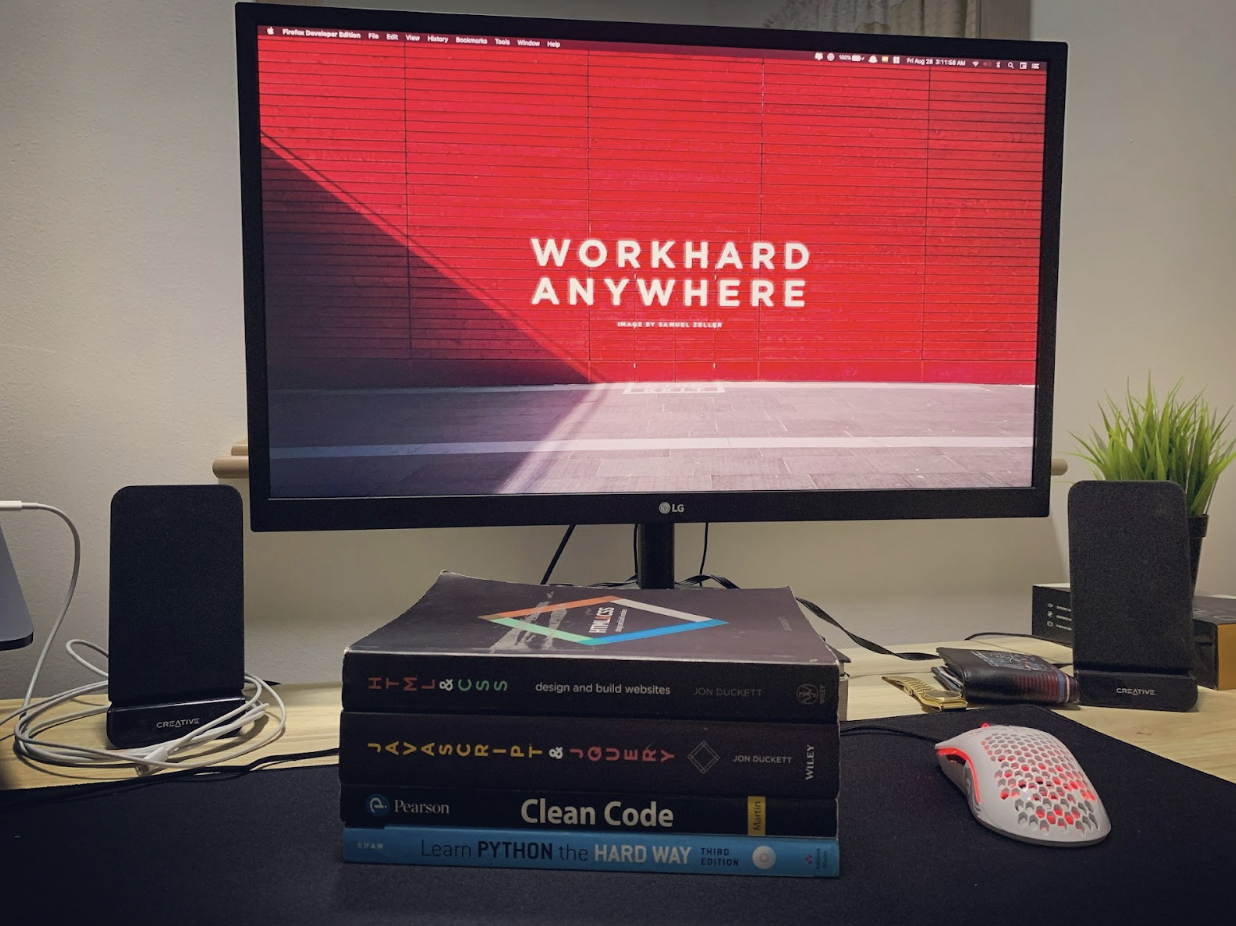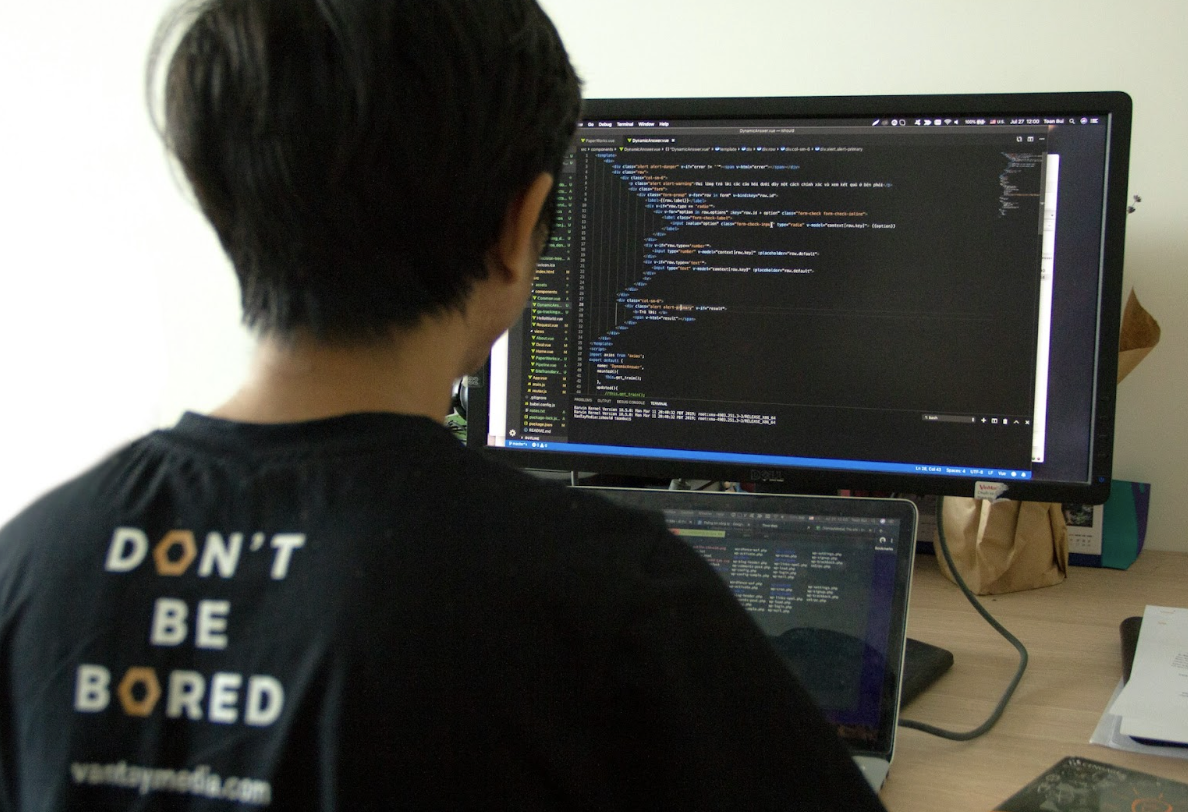 News
News
Nearshoring has quickly become one of the most talked-about strategies for companies looking to scale AI initiatives without the complications of fully offshore outsourcing. At first glance, the idea feels perfect: closer time zones, easier communication, and lower costs compared to local hiring. Yet once businesses move from theory to execution, they discover that nearshoring AI services comes with challenges that are far from obvious. AI projects are not like typical software development efforts. They require deep technical expertise, heavy infrastructure, and careful handling of sensitive data. This makes nearshoring a double-edged sword. If done right, it can accelerate innovation and reduce costs. If done poorly, it creates technical debt, security risks, and compliance nightmares. Let’s look at the top twelve hard truths about nearshoring AI services that most businesses only realize once they are deep into a project.
Nearshore AI Services - 12 Truths You Need to Know
1) Nearshoring Does Not Guarantee Instant Access to Top AI Talent.
One of the biggest misconceptions is that every nearshore vendor has a bench full of elite AI specialists. The reality is more mixed. Many providers can offer software developers who know machine learning basics, but few have data scientists capable of building production-grade systems. AI is a niche that requires advanced knowledge of statistics, optimization, and scalable architectures. If your project depends on custom algorithms, natural language processing, or advanced computer vision, you cannot assume that any nearshore partner will be up to the task. You need to vet them carefully. Always request CVs of the people assigned, ask for demonstrations of previous AI solutions, and check if they have experience with reproducible pipelines. The gap between someone who can run a Python script and someone who can architect an AI platform is enormous.
2) Intellectual Property Risks Are Very Real.
Companies often believe that intellectual property risks only exist when outsourcing offshore to distant countries. The truth is that even nearshore partnerships can expose your data, algorithms, and trade secrets to vulnerabilities. Contracts may look solid on paper, but enforcement depends heavily on local legal systems and regulations. For AI project,s this risk is amplified. Training datasets, labeling methodologies, and model architectures can be some of your company’s most valuable assets. If ownership terms are unclear or if a vendor reuses your assets elsewhere, you face major business damage. The safest approach is to use country-specific legal counsel, insist on strict assignment clauses, and ensure that all deliverables are formally transferred to your ownership.
3) Data Sovereignty and Compliance Rules Can Derail Projects.
AI projects thrive on data, but regulations around where data can be stored, processed, and transferred are becoming stricter every year. A dataset that is fine to process in your country may trigger restrictions the moment it is transferred across a border. Some Latin American countries have their own data localization laws. When a nearshore partner suggests hosting or processing sensitive data on their infrastructure, you must ask exactly where it resides and how it will be protected. One smart option is to let them build models with synthetic data or federated learning if moving real data is too risky.
4) Hidden Costs Often Erase the Initial Savings.
Hourly rates are usually the first thing companies compare when looking at nearshore AI vendors. While those rates may be attractive, the hidden costs pile up quickly. Travel for onboarding, higher governance overhead, extended QA cycles, and expensive compute resources often offset the savings. AI development is also inherently experimental. Models need multiple iterations, and datasets usually need extensive cleaning. This means you will spend more time and money coordinating and refining work than you originally planned. Before signing a contract, calculate a realistic total cost of ownership. Add expenses for compute, data labeling, security reviews, and at least a 20 percent buffer for rework.
5) Infrastructure Reliability Can Make or Break Your Project.
Training machine learning models requires stable, high-performance infrastructure. If your nearshore partner has unreliable connectivity, limited access to GPUs, or frequent power issues, your experiments will stall. This is not just a theoretical risk. Some regions still experience unstable connectivity or limited availability of enterprise-grade cloud regions. Before committing, ask vendors how they run large-scale training workloads to avoid major AI services challenges. Do they rely on local data centers or global cloud platforms? Can they show historical uptime metrics? Do they have fallback strategies in case of disruptions? A partner that cannot answer these questions clearly is not ready for serious AI work.
6) Time-zone Alignment Does Not Eliminate Cultural Differences.
The biggest appeal of nearshoring is often overlapping work hours. However, time-zone proximity alone does not solve deeper communication and cultural challenges. Different expectations around ownership, deadlines, and reporting can lead to delays and misunderstandings. AI projects in particular need tight feedback cycles because small changes in training data or hyperparameters can dramatically affect results. If your team assumes nearshore engineers will flag every issue, but the engineers assume you will provide all directions, the result is wasted cycles. Define clear workflows and a shared definition of what “done” means for each deliverable. Regular demos and sprint reviews can bridge the cultural gap.
7) Vendor Dependency is Harder to Escape in AI.
In traditional software outsourcing, switching vendors is painful but manageable. With AI, it is far worse. Your models, datasets, feature stores, and experiment tracking systems are deeply tied to how a vendor has built them. If they own key parts of the pipeline, moving away from them becomes costly and risky. The smart strategy is to retain ownership of core assets from day one. Make sure your company controls the model registry, dataset storage, and infrastructure configurations. Require all code and artifacts to be exportable. This way, even if you switch providers later, you can continue development without starting from scratch.
8) Retention of Specialized Talent is a Hidden Challenge.
AI expertise is in high demand everywhere, including nearshore regions. If your vendor’s best data scientist gets poached, your project could lose critical knowledge overnight. Unlike general developers, specialized ML engineers are harder to replace because they understand both the data and the experimental history behind your models. When negotiating contracts, ask about staff continuity plans. Ensure knowledge transfer is built into the engagement, and request overlapping handover periods when staff changes occur. This minimizes the disruption when someone leaves.
9) Security Risks Increase with Distributed AI Workflows.
Every additional location in your AI pipeline increases your attack surface. Data annotation, preprocessing, training, and deployment may all happen in different places, creating multiple vulnerabilities. Risks include dataset theft, poisoned training labels, or even malicious access to model weights. Your due diligence should go beyond asking whether a vendor follows basic security practices. Require formal certifications such as SOC2, enforce encryption for all data transfers, and integrate logs into your central monitoring system. Security is not optional in AI.

10) Faster Iteration Requires Strong Governance.
One promise of nearshoring is faster iteration due to overlapping hours. But without proper governance, that speed creates chaos. In AI, each new model version must be tracked, tested for drift, and validated before deployment. If your nearshore partner pushes too many untested changes, you may end up with models that perform unpredictably. Before scaling up, establish solid MLOps foundations. This includes version-controlled data, automated testing pipelines, shadow deployments, and clear promotion criteria. Only then can nearshore teams safely accelerate development without breaking production.
11) Ethical and Legal Accountability Cannot be Outsourced.
AI raises ethical questions that extend beyond technical accuracy. Bias in training data, lack of transparency in model decisions, or inappropriate data use can all harm your brand and invite legal scrutiny. When nearshore vendors are involved, accountability becomes murky. Make sure contracts clearly define responsibilities for data handling, fairness testing, and regulatory compliance. Insist that your partner delivers documentation such as model cards and bias reports. Your company will ultimately be held responsible for outcomes, so do not outsource ethical responsibility.
12) Nearshoring AI is Not Staff Augmentation, it is a Strategic Partnership.
Nearshoring is evolving. Many providers are moving beyond routine coding and offering higher-value AI services. This is exciting, but it requires a different mindset. Treating nearshore AI as simple staff augmentation is a mistake. To succeed, you need joint roadmaps, shared KPIs, and executive buy-in on both sides. This is less about filling seats and more about building a long-term partnership. Only when both sides are aligned on goals and incentives will nearshoring deliver sustainable AI outcomes.
Partnering With You on the Right AI Path
We know firsthand that businesses face many hidden challenges when nearshoring AI projects. The Blue Coding team helps companies carefully address the many considerations about AI that can make or break a project. Our team brings real-world experience in navigating the toughest considerations about AI, ensuring that your projects are both secure and scalable. If you are exploring nearshore partnerships and want a trusted team by your side, contact us today to start building AI solutions that truly last. We can discuss all strategies and queries on a complimentary strategy call!



